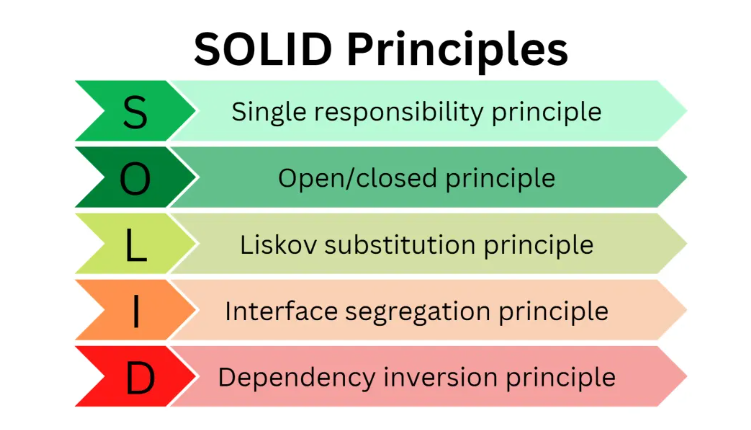-
0 Comments
Affiliate marketing is a type of performance-based marketing where individuals or businesses earn a commission by promoting products or services of other companies. It involves an affiliate promoting a product through various channels, such as websites,
Read Moresocial media, or email marketing, and earning a commission for each sale or action generated through their referral. It can be a way for individuals to monetize their online presence or for businesses to expand their reach through partnerships. If you have any specific questions or need more information about affiliate marketing, feel free to ask!
Understanding Affiliate Marketing
Affiliate marketing is a marketing strategy where individuals or businesses, known as affiliates, promote products or services on behalf of another company. The affiliates earn a commission for each sale, lead, or action generated through their promotional efforts.
Here’s how it typically works:
1. The affiliate joins an affiliate program offered by a company or an affiliate network.
2. They receive a unique affiliate link or code that tracks their referrals.
3. The affiliate promotes the products or services using various marketing channels, such as websites, blogs, social media, or email marketing.
4. When someone clicks on the affiliate’s link and makes a purchase or completes a desired action, the affiliate earns a commission.
5. The company or affiliate network tracks the referrals and handles the payment process.
Affiliate marketing benefits both the company and the affiliate. The company gains exposure and potential customers through the affiliate’s promotional efforts, while the affiliate earns a commission for driving sales or actions.
It’s important for affiliates to choose products or services that align with their audience and interests to maximize their chances of success. Additionally, building trust with their audience and providing valuable content can help increase conversions.
Types of Affiliate Marketing
There are several types of affiliate marketing models that affiliates can participate in. Here are a few common types:
1. Pay-per-sale (PPS): This is the most common type of affiliate marketing. Affiliates earn a commission when a referred customer makes a purchase through their affiliate link. The commission is usually a percentage of the sale value.
2. Pay-per-click (PPC): In this model, affiliates earn a commission for each click on their affiliate link, regardless of whether a sale is made or not. The commission is typically lower compared to PPS, but it can still be a viable option for affiliates with high traffic volumes.
3. Pay-per-lead (PPL): Affiliates earn a commission when they refer a lead to the company, such as someone signing up for a newsletter or filling out a form. The commission is usually based on the completion of a specific action rather than a sale.
4. Pay-per-call (PPC): This model is similar to PPL, but instead of generating leads online, affiliates earn a commission for each phone call they drive to the company. This is commonly used in industries like insurance or financial services.
5. Two-tier affiliate marketing: In this model, affiliates not only earn commissions for their own referrals but also for recruiting other affiliates to join the program. They earn a percentage of the commissions generated by their recruited affiliates.
These are just a few examples of affiliate marketing models, and there may be variations or combinations of these models depending on the specific affiliate program. It’s important for affiliates to understand the terms and conditions of the program they are joining to know how they will be compensated.
Examples of Affiliate Marketing
Certainly! Here are a few examples of affiliate marketing in action:
1. Bloggers: Many bloggers monetize their websites by incorporating affiliate links within their content. For instance, a fashion blogger might promote clothing or accessories from a specific brand and earn a commission for each sale made through their affiliate link.
2. YouTubers: Influencers on YouTube often use affiliate marketing to earn income. They may include affiliate links in their video descriptions, recommending products or services they use and love. When viewers click on those links and make a purchase, the YouTuber earns a commission.
3. Coupon and Deal Websites: Websites that specialize in sharing coupons and deals often participate in affiliate marketing. They provide their audience with exclusive discounts and promotions, and when users make a purchase using their affiliate links, they earn a commission.
4. Review Websites: Websites that offer product reviews and comparisons often include affiliate links to the products they review. If a reader decides to purchase the product based on the review and clicks through the affiliate link, the website owner earns a commission.
5. Social Media Influencers: Influencers on platforms like Instagram or TikTok may partner with brands and promote their products or services through sponsored posts. These posts often include affiliate links, allowing the influencer to earn a commission for any sales generated through their promotion.
These are just a few examples, but affiliate marketing can be found across various industries and platforms. It offers a way for individuals and businesses to earn income by promoting products or services they believe in.
How you Become an Affiliate Marketer
To become an affiliate marketer, you can follow these general steps:
1. Choose a niche: Select a specific area or industry that you are interested in or knowledgeable about. This will help you target the right audience and find relevant products or services to promote.
2. Research affiliate programs: Look for companies or affiliate networks that offer affiliate programs in your chosen niche. Consider factors such as commission rates, product quality, and affiliate support.
3. Join affiliate programs: Sign up for the affiliate programs that align with your niche and meet your criteria. Some programs may require an application process, while others may have instant approval.
4. Build a platform: Create a platform where you can promote the products or services as an affiliate. This could be a website, blog, social media channels, or a combination of these. Ensure that your platform provides valuable content and engages your target audience.
5. Generate traffic: Drive traffic to your platform through various marketing strategies such as SEO (search engine optimization), content marketing, social media marketing, email marketing, or paid advertising. The more targeted traffic you attract, the higher the chances of conversions.
6. Promote affiliate products: Incorporate affiliate links or banners into your platform’s content. Write compelling product reviews, create informative content, or offer special promotions to encourage your audience to click on your affiliate links and make a purchase.
7. Track and optimize: Monitor your affiliate marketing efforts and track the performance of your promotions. Analyze which strategies are working well and optimize your campaigns accordingly to maximize your earnings.
Remember, building a successful affiliate marketing business takes time, effort, and patience. It’s important to provide value to your audience, be transparent about your affiliate relationships, and continuously learn and adapt to stay ahead in the ever-evolving world of affiliate marketing.















